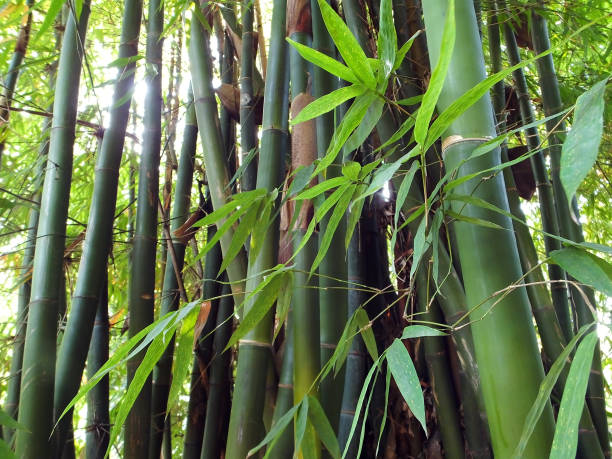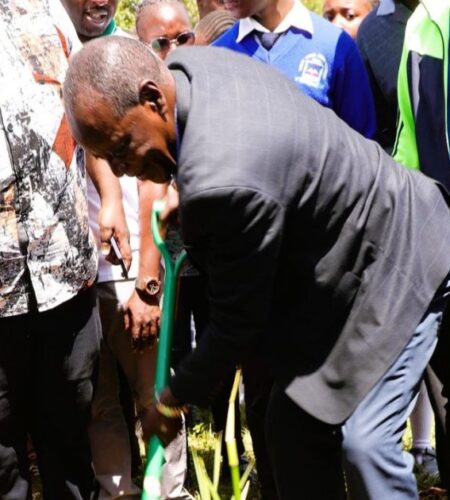Vihiga County Plants 1,500 Bamboo Seedlings at Kaimosi Wetlands.
In a move to conserve the environment, Vihiga County has planted approximately 1,500 bamboo seedlings at Kaimosi Wetlands in Shamakhokho Ward, Hamisi Subcounty, as part of the World Wetlands Day celebrations.
Governor Leads Environmental Conservation Efforts
Governor Dr. Wilber Ottichilo spearheaded the initiative, accompanied by county staff and local residents, with the primary goal of safeguarding the wetland and preserving its natural ecosystem.
As the Chairman of the Environment and Climate Change Committee at the Council of Governors (COG), he emphasized the importance of tree planting to counteract the adverse effects of climate change. He urged residents to actively participate in afforestation efforts to enhance environmental resilience.
Threats to Wetlands and Conservation Measures
The governor highlighted concerns over wetland degradation, attributing it to encroachment, which disrupts the water cycle by interfering with the natural processes of receiving, storing, releasing, and regulating river and stream flows.
Dr. Ottichilo elaborated on the county’s strategies for wetland protection, which include training community members and raising awareness on proper conservation and management techniques.
Read Also: Rabbit Farming: Livestock Officer Challenges Common Myths
He noted that these efforts would significantly improve public knowledge regarding the crucial role wetlands play in sustaining human well-being and environmental preservation.
8 Amazing Facts About Bamboo
Bamboo may not be the first thing that comes to mind when thinking about reforestation. While it is not technically classified as a tree, planting bamboo in its native regions offers significant environmental benefits. As the fastest-growing plant on the planet, bamboo holds great promise as a sustainable resource. Its wood-like stem gives it a tree-like appearance, yet it possesses unique qualities that set it apart. Discover more about this extraordinary plant!

Bamboo’s Astonishing Growth Speed
Recognized by Guinness World Records, certain species of bamboo can grow at an astonishing rate of up to 91 cm (35 in) in a single day. This translates to about 1.45 inches per hour—meaning that with patience, one could witness bamboo growing in real-time.
Bamboo’s Self-Regenerating Ability
Remarkably, bamboo exhibits the ability to regenerate after being cut, provided that harvesting is done correctly. Many species reach full maturity within four to eight years, after which they can be sustainably harvested for over four decades. Since only the aboveground portions are collected, soil disturbance remains minimal, preserving ecosystem stability. The key to this resilience lies in its robust rhizome system, which fosters the emergence of new shoots.
Bamboo’s Role in Carbon Sequestration
Beyond its rapid growth, bamboo contributes significantly to climate change mitigation. Research conducted by Project Drawdown suggests that bamboo cultivation can sequester approximately 2.03 metric tons of carbon per hectare annually. Additionally, carbon stored within long-lasting bamboo products further enhances its environmental impact.
Two Distinct Categories of Bamboo
With nearly 1,000 bamboo species found worldwide, they are broadly categorized into two main types: clumping and running. Clumping bamboos grow in tight clusters and expand gradually, while running bamboos spread aggressively through underground rhizomes. Due to their rapid expansion, some running bamboo species are considered invasive, whereas clumping varieties are less likely to pose ecological concerns.
Strength and Flexibility of Bamboo
Despite being hollow, bamboo stems are incredibly strong, allowing them to reach impressive heights of up to 130 feet with diameters of about one foot. Thanks to its lightweight yet durable structure, bamboo efficiently utilizes fewer resources while growing as tall as traditional trees. Large bamboo stems are commonly processed into planks for home construction, while various stem sizes serve as essential materials for scaffolding in building projects.
Bamboo’s Rare Flowering Cycle
Unlike most plants, bamboo primarily relies on vegetative growth rather than frequent seed production. As a result, bamboo species flower only once in their lifespan, which can range from 12 to 120 years.
Bamboo’s Contribution to Women’s Economic Empowerment
Due to its lightweight nature, bamboo provides an accessible economic opportunity for women, enabling them to engage in the bamboo industry and generate income. Products crafted from bamboo include briquettes, flooring, charcoal, incense sticks, and furniture, presenting a viable source of financial empowerment.
Bamboo’s Use in Traditional Chinese Medicine
For centuries, fine-grained silica extracted from bamboo joints, known as Tabasheer, has been a prized ingredient in Traditional Chinese Medicine (TCM). TCM practitioners incorporate it into formulations aimed at treating ailments associated with excess heat, phlegm, and stagnation, highlighting bamboo’s medicinal significance.


Comments